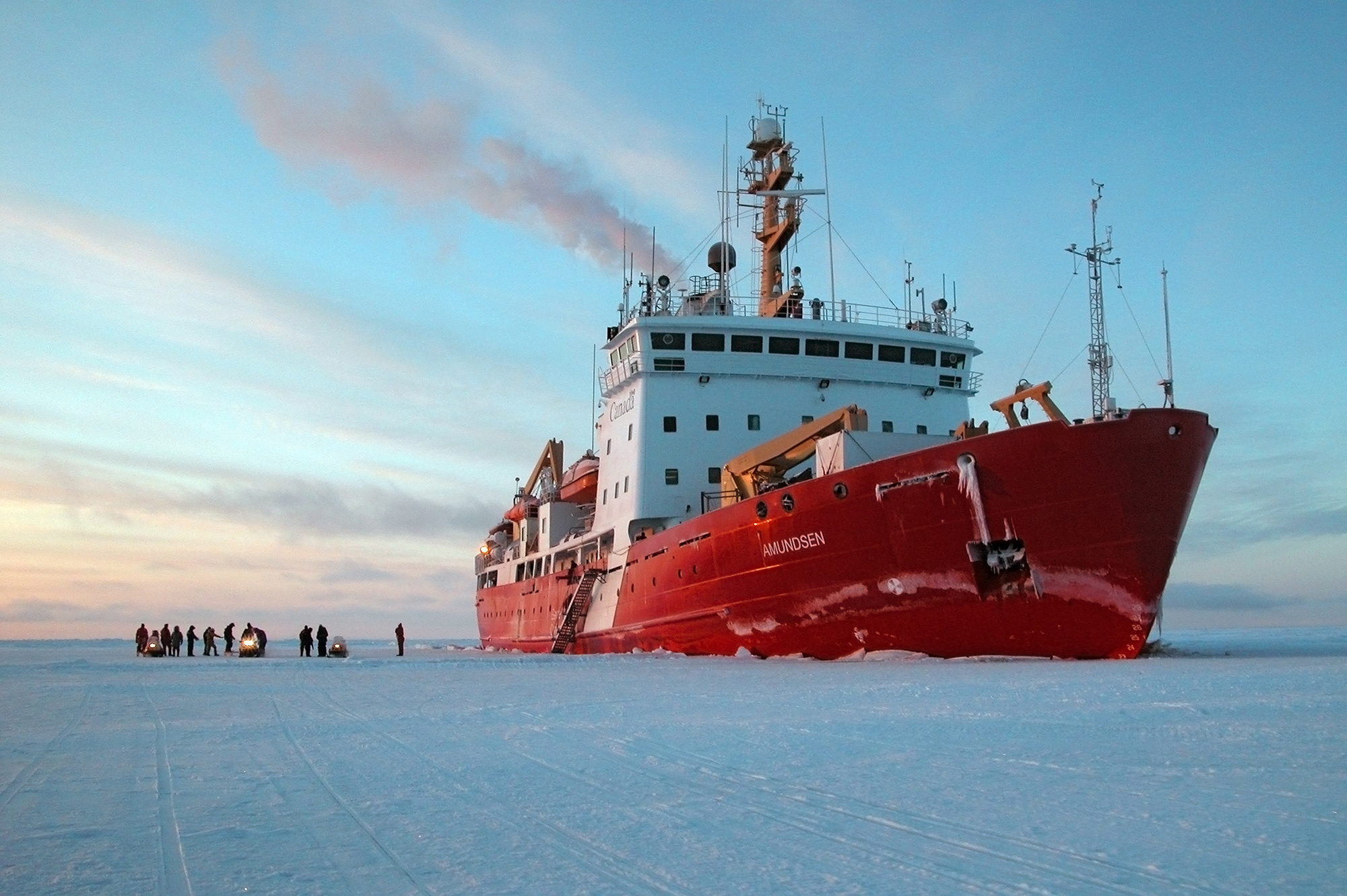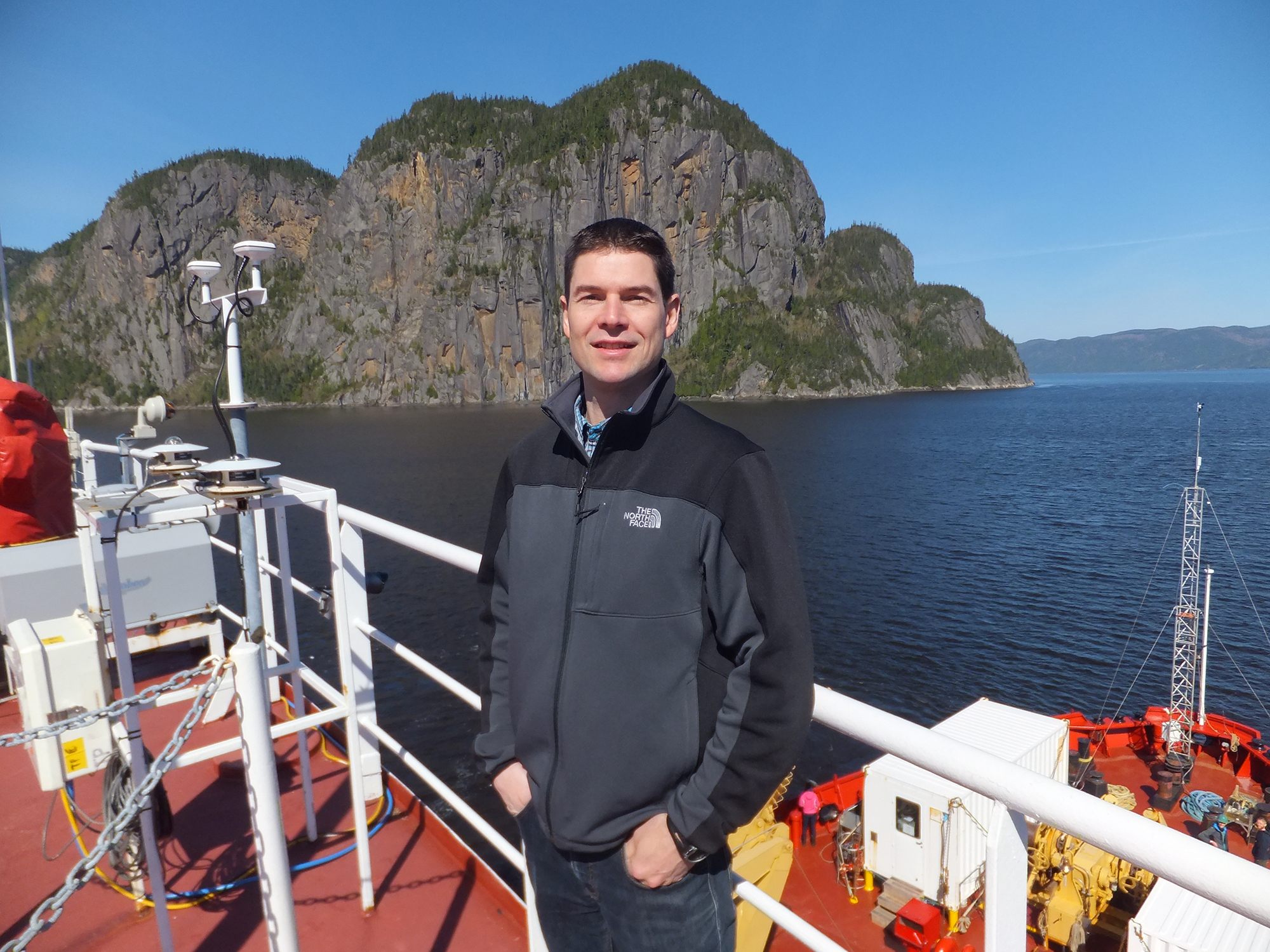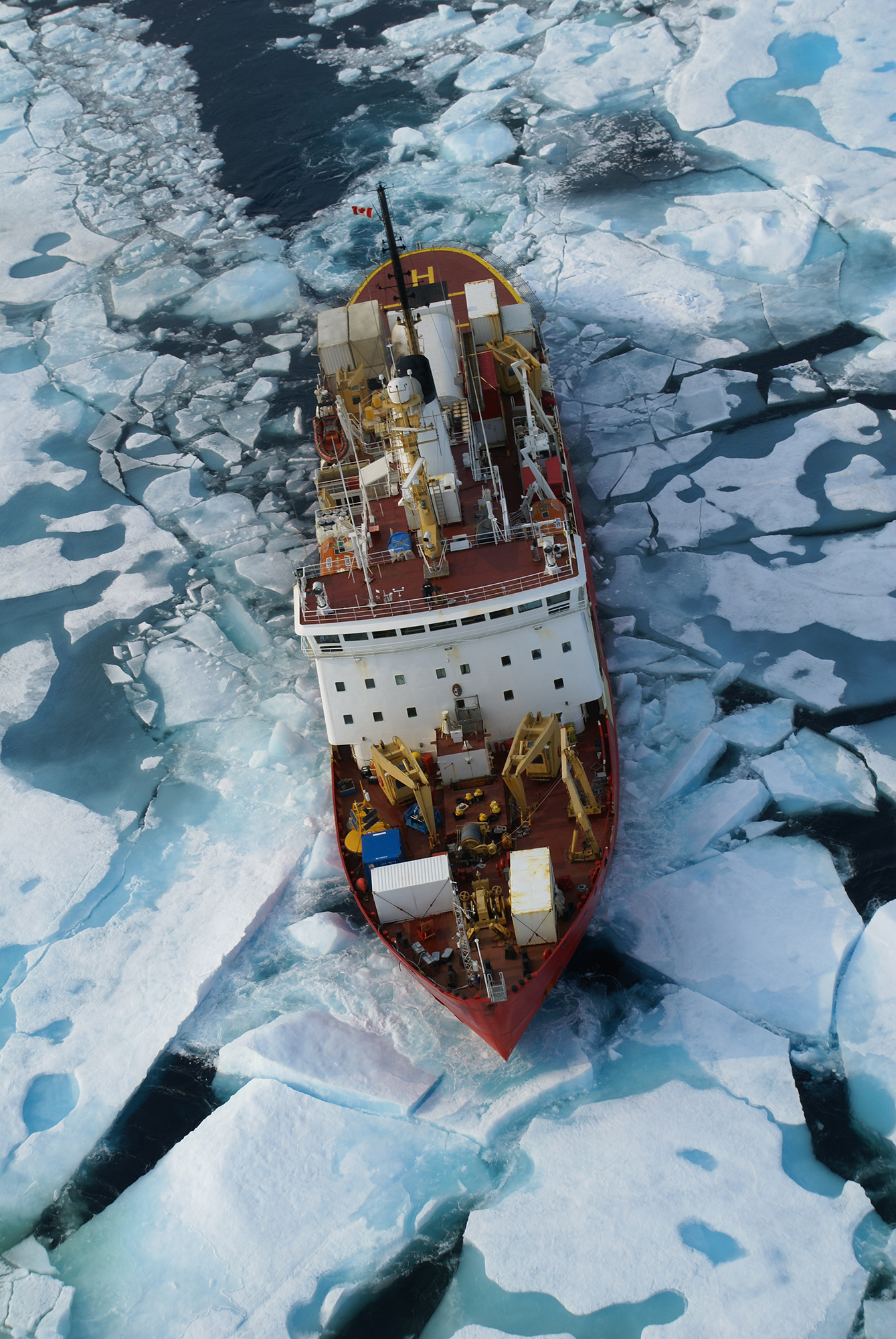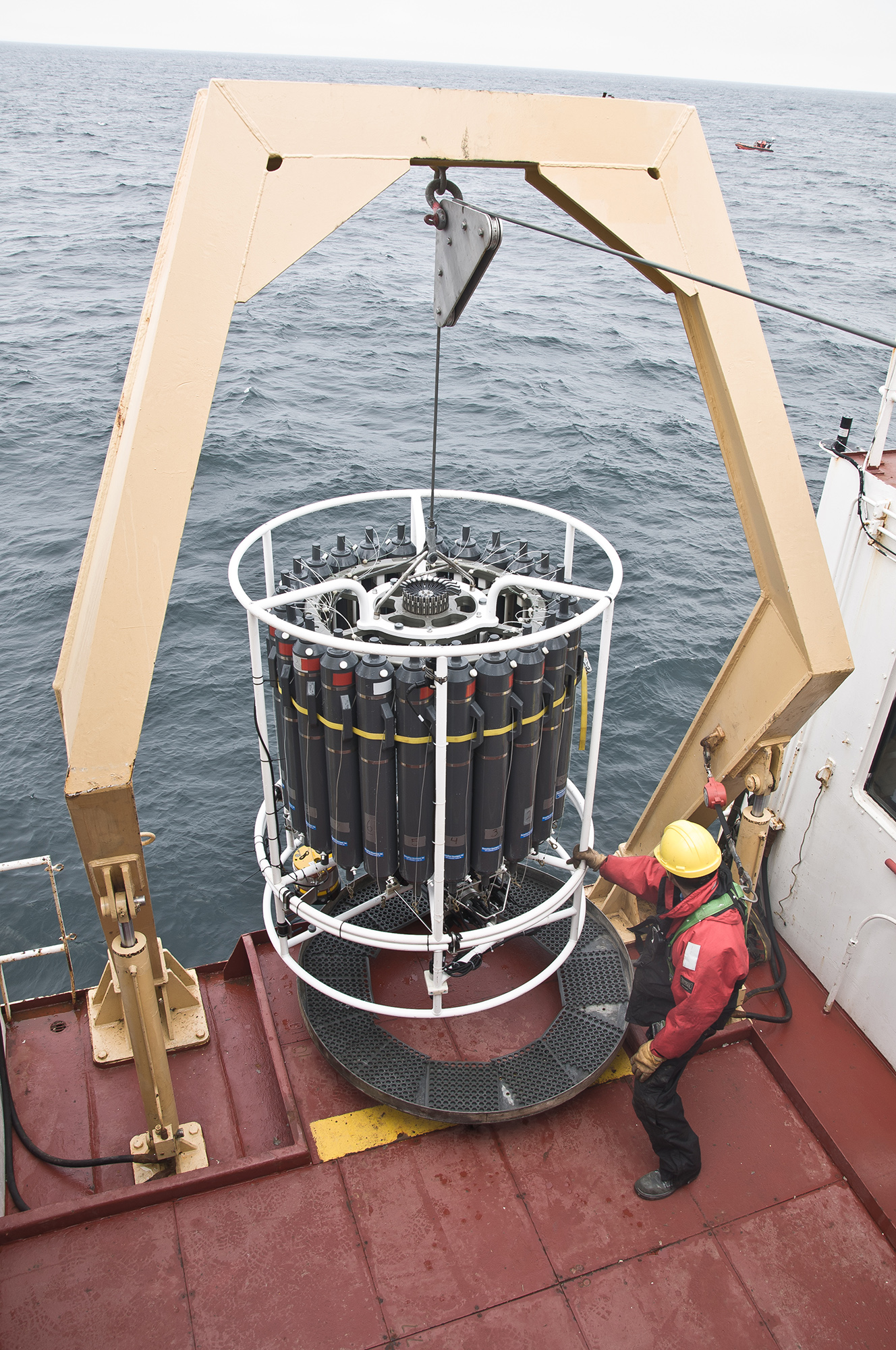
The Amundsen icebreaker: understanding the Canadian Arctic
Alexandre Forest, Executive Director, Amundsen Science, manages the largest research vessel in Canada.
His first passion is oceanography in the Arctic seas. And his second home is the CCGS Amundsen research icebreaker, which has been travelling in the Canadian Arctic for 15 years now. For Alexandre Forest, a researcher in oceanography and specialist in Arctic marine ecosystems, this complex, perpetually changing world is the purpose a lifetime spent trying to better understand and know the mechanisms of evolution, alimentation and survival.
This icebreaker, the only one of its kind after avoiding being scrapped in the early 2000s, has been converted into a real scientific machine thanks to funds invested by Université Laval and the Canadian Coast Guard. Now equipped with 65 scientific systems and 22 onboard and portable laboratories, it provides a state-of-the-art research platform designed to navigate and document the unknown regions of the North.
A floating university building
After spending the winter performing its traditional icebreaker duties, the ship sets off to the Arctic every summer to carry out its scientific mission. Since 2003, it has sailed up to 152 days per year to the frozen seas with 40 researchers and 40 mariners onboard ensuring its continuous operation. “It operates 24 hours a day. We go from one oceanographic station to another,” said Alexandre Forest. Everything is designed to make the best use of valuable time and maximize returns on a costly operation that calls for complete scientific equipment along with everything it takes for optimal logistics management. “Even though we live in really close quarters, everything is in place for us to devote ourselves 100% to our research. It’s like having a floating university building.”
Since its conversion, the ship has revolutionized the North Sea research community. “We are trying to learn how systems are initially to better understand how they evolve in response to climate change and human disturbance. And we have covered a great deal in 15 years.” His finding? “Just about the whole ecosystem is changing right now. This is a non-debatable and robust reality.”
A new generation of experts
The onboard research is hardly limited to the natural sciences. Biology and analyzing bacteria and phytoplankton rub shoulders with medical missions and the social sciences. As the ecosystem keeps changing, so does a way of life for the neighbouring communities whose source of food has, for centuries, been seafood.
Over time, the operation of this exceptional vessel is a game changer. “We’re training a whole generation of new experts who have in-depth knowledge of the North, who will make decisions backed by veteran experience and who can better manage their decisions into the future. At the top of the list: local communities that want to take an active part in managing their changing environment. The scientific community is willing to do things for the North and from the North, to involve Northern communities even more and to provide training.”
Concerns on the horizon
Despite its crucial mission, the CCGS Amundsen can be requisitioned at any time to do something other than science, interrupting its research projects in favour of other assignments. Alexandre Forest and the scientific community are keen to see the Canadian icebreaker fleet renewed in the coming years so that the CCGS Amundsen can pursue its mission on an ongoing basis. The goal: not to lose the North!
To learn more about the CCGS Amundsen, visit its website. For any questions about training programs or related research projects, contact



